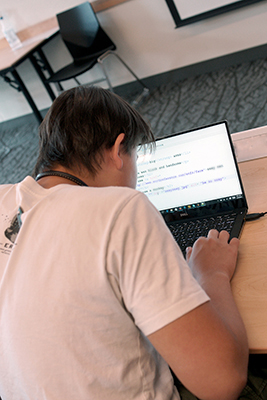Independence Through Assistive Technology

Imagine being less independent than you want to be because of a disability. People with disabilities, however, can use tools and assistive technology to make college, careers, and everyday life more accessible.
Enter Microsoft, a technology company who tries to help the larger population. Every year Microsoft runs a weeklong coding marathon, or “hack-a-thon,” geared towards people who do not usually get the chance to work together every day.
Over the past few years, Microsoft has made dramatic strides to help people with disabilities function more independently. There are many examples of assistive technology from Microsoft. One of which is Seeing AI. This program is meant to help the blind by allowing them to comprehend what is around them. When they walk past a monument or important landmark, an earpiece speaks to the blind individual about the landmark.
A person with ALS (amyotrophic lateral sclerosis) is able to regain independence, thanks to a wheelchair that is equipped with a computer controlled by one’s eyes. For example, if one looks left, then the chair will move left, without the use of a joystick, thus increasing independence of someone who may be unable to use a joystick.
Another assistive technology item is a program called OneNote, which has built in accessibility features. One main feature of this program is that it will read text to you and break large words into separate syllables. This helps people with dyslexia, because the smaller the parts, the easier it is for a text to be understood, therefore helping to increase reading speed and become more efficient. When given access to the right technology, people with disabilities become more self-sufficient.